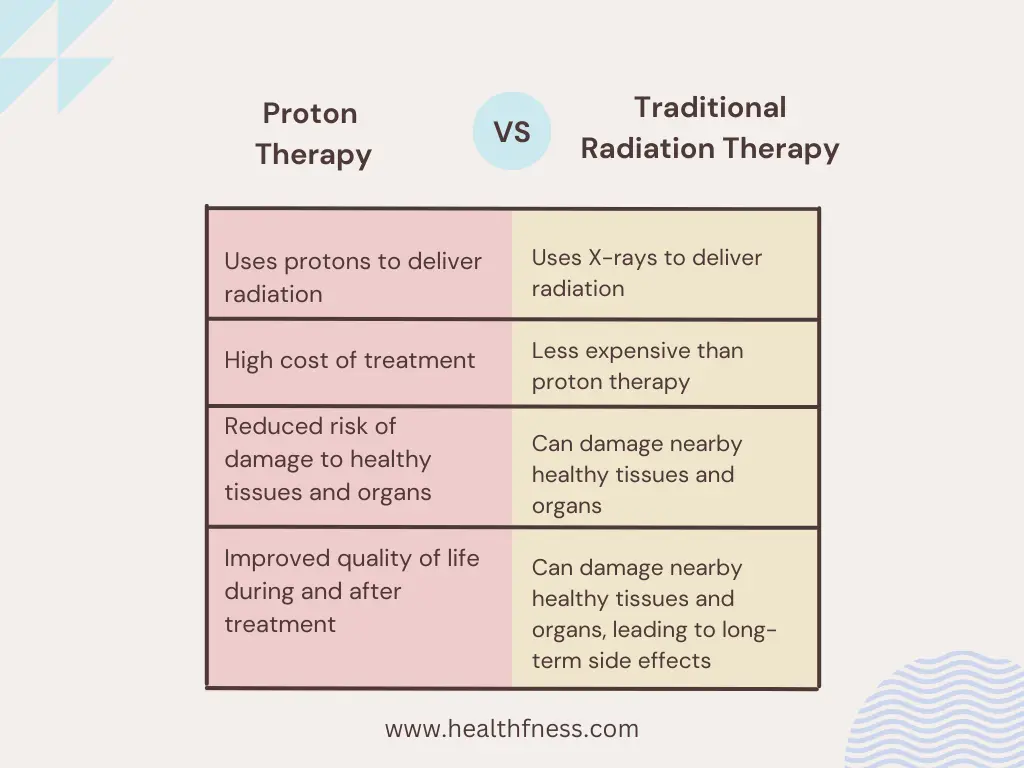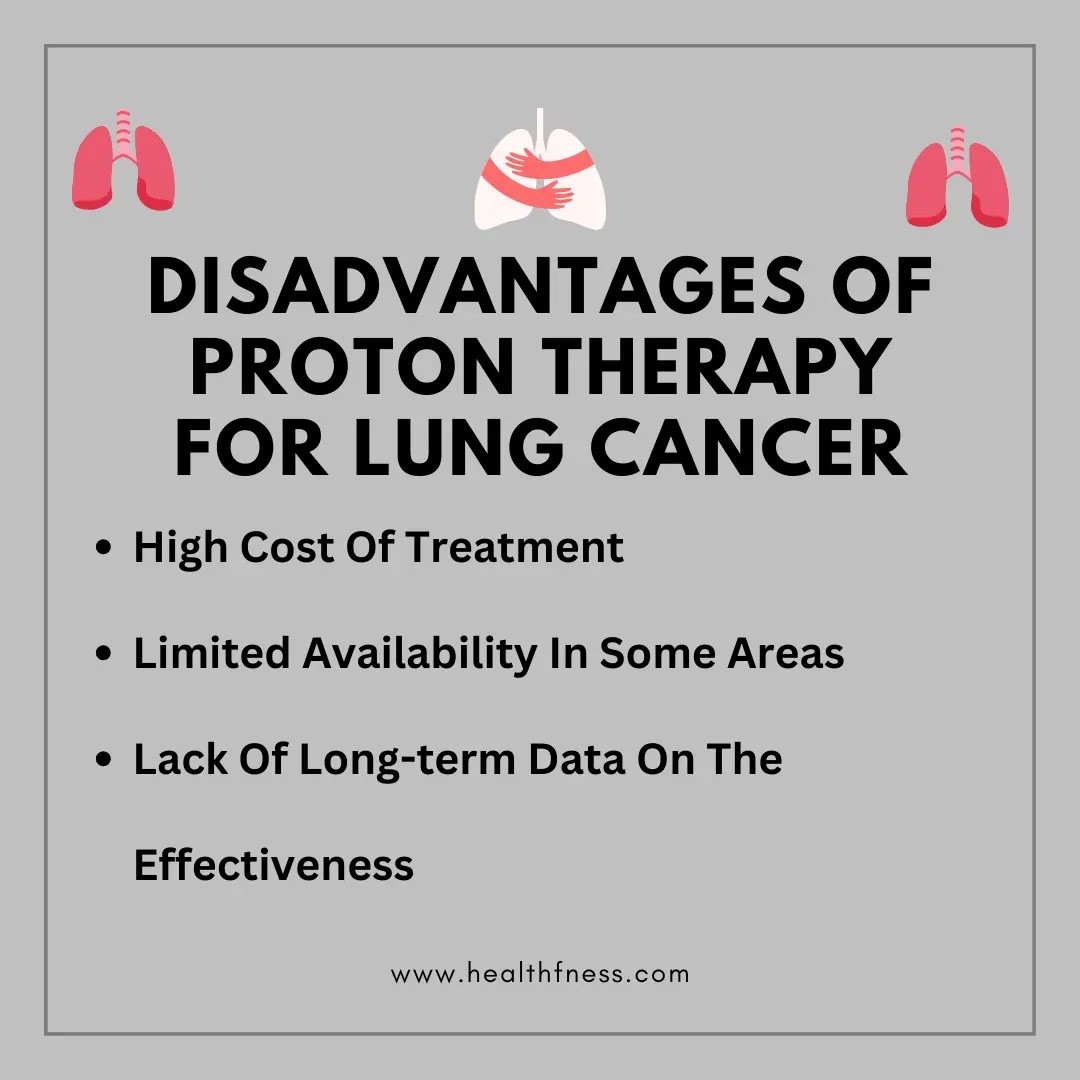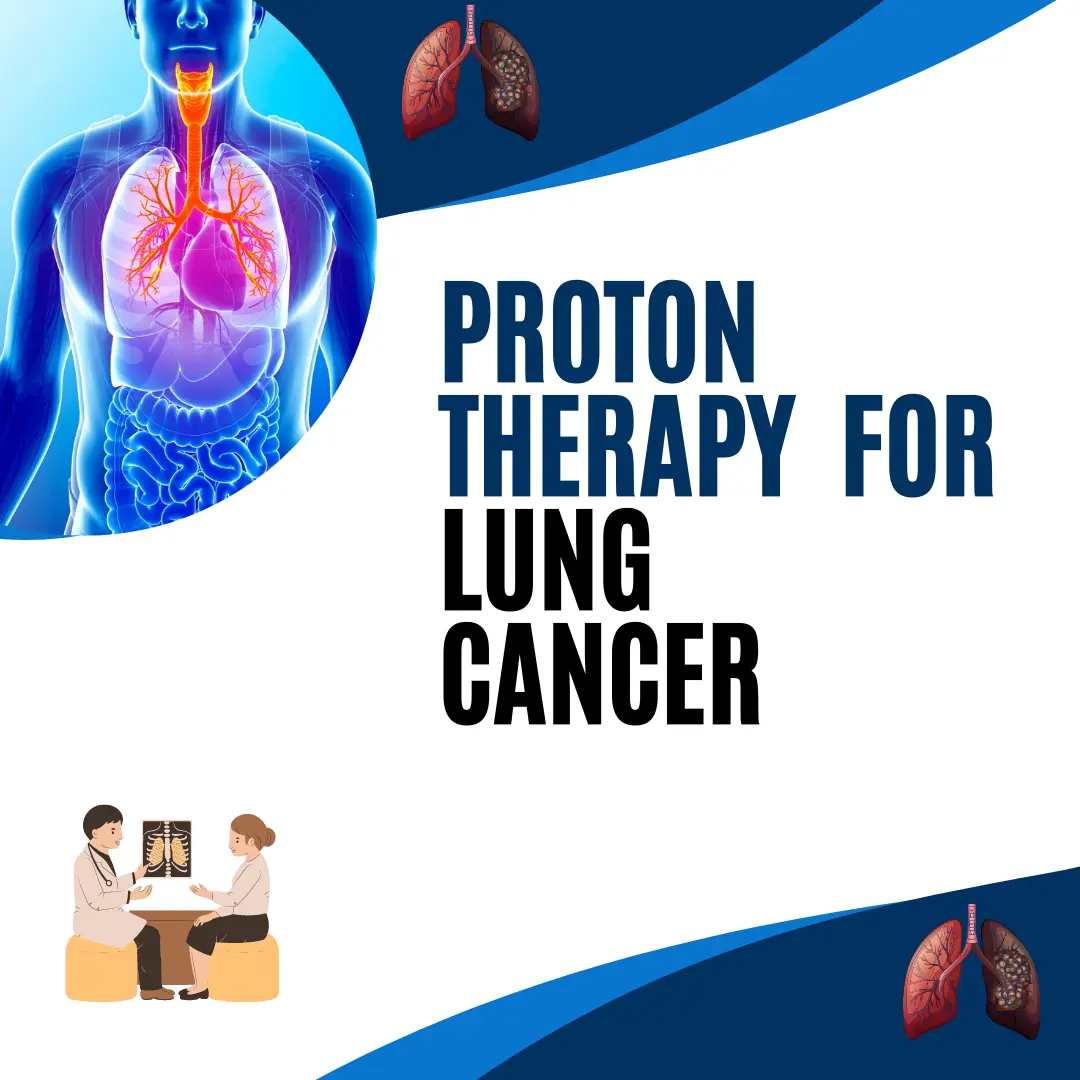Proton Therapy For Lung Cancer is a type of treatment want to know about the full detail of proton therapy then keep reading this guide. Lung cancer is a type of cancer that begins in the lungs and can spread to other parts of the body and harm all neighboring organs inside the body. It is one of the most common types of cancer and a leading cause of cancer-related deaths worldwide. The two main types of lung cancer are non-small cell lung cancer and small cell lung cancer, each with different treatment approaches.
Traditional treatments for lung cancer include surgery, chemotherapy, and radiation therapy. Radiation therapy is a common or most-known treatment option that uses high-energy radiation to kill cancer cells. However, traditional radiation therapy can also damage healthy tissues and organs surrounding the tumor it has many side effects.
What is Proton Therapy
Proton therapy is a newer and the latest form of radiation therapy that uses protons instead of traditional X-rays to target and destroy cancer cells. Protons have unique properties that allow them to deliver high doses of radiation directly to the tumor while minimizing damage to nearby healthy tissues and organs. This makes proton therapy a promising treatment option for lung cancer patients.
You May Also Like To Read: Lung Cancer ICD 10: Understanding The Code, Diagnosis, And Treatment
Proton Therapy For Lung Cancer
How It Works
Unlike traditional radiation therapy that uses X-rays, proton therapy can be more precisely targeted to the tumor, which means that it may cause fewer side effects. This is because protons can be directed to stop at the tumor and release their energy, whereas traditional radiation therapy can continue to deposit energy beyond the tumor, potentially causing damage to healthy tissues and organs.
Proton therapy uses a machine called a cyclotron or synchrotron to accelerate protons to high speeds. The protons are then directed through a series of magnets that shape and aim the beam at the tumor. The patient lies on a table that can be moved to ensure the tumor is in the correct position. The proton beam is then delivered to the tumor in a series of quick bursts or “fractions” over several weeks.
The equipment used in proton therapy is complex and requires highly specialized training to operate. The treatment room is typically lined with thick walls and radiation shields to protect staff and others from radiation exposure. Patients may wear immobilization devices, such as masks or molds, to keep them still during treatment and ensure accurate targeting of the tumor.
You May Also Like To Read: Lung Nodule ICD 10: Cracking The Code, Diagnosis, and Treatment
Advantages Of Proton Therapy For Lung Cancer
Proton therapy offers several advantages for the treatment of lung cancer, including:
Reduced risk of damage to healthy tissues and organs
One of the most unique advantages of proton therapy is that it decreases the risk of damage to the neighboring organs of tumors. Proton therapy can deliver radiation directly to the tumor with minimal damage to surrounding healthy tissues and organs. This can help reduce the risk of long-term side effects, such as damage to the heart, lungs, or esophagus, which can occur with traditional radiation therapy.

Higher doses can be delivered to the tumor with less risk of side effects
In proton, therapy doctors can give higher doses to the patient because despite traditional radiation therapy it has fewer side effects. And by giving a higher dose the duration of treatment also decreases.
Improved quality of life during and after treatment
Because proton therapy can target the tumor more precisely, it may cause fewer side effects than traditional radiation therapy. This can help improve the patient’s quality of life during and after treatment so we can conclude at this point that it is a better treatment option for a patient.

Disadvantages of Proton Therapy for Lung Cancer
While proton therapy offers several advantages for the treatment of lung cancer, there are also some potential disadvantages to consider:
High Cost Of Treatment
This treatment is highly costly every person cannot afford it. Proton therapy is a relatively new and advanced technology, and as a result, it can be expensive. The cost of proton therapy can be several times higher than traditional radiation therapy, which may make it unaffordable for some patients.
Limited Availability In Some Areas
There are currently only a limited number of proton therapy facilities worldwide, and they may not be accessible to all patients. This can be a particular challenge for patients who live in rural or remote areas or who have limited access to specialized medical facilities and is also a drawback of this treatment.

Lack Of Long-term Data On The Effectiveness
While proton therapy has shown promise in treating lung cancer, there is still limited long-term data on its effectiveness compared to traditional radiation therapy. There is a need to improve the treatment of proton therapy so that it has long-term positive effects.
Proton Therapy vs. Traditional Radiation Therapy For Lung Cancer
Here is a comparison between both of these treatments both treatments have benefits and some drawbacks as given below:
| Proton Therapy | Traditional Radiation Therapy | |
|---|---|---|
| How it works | Uses protons to deliver radiation directly to the tumor, minimizing damage to surrounding healthy tissues and organs | Uses X-rays to deliver radiation to the tumor and surrounding tissues |
| Potential Benefits | Reduced risk of damage to healthy tissues and organs Higher doses of radiation can be delivered to the tumor with less risk of side effects Improved quality of life during and after treatment | Less expensive than proton therapy Widely available in most medical facilities Can effectively treat certain types of lung cancer |
| Potential Drawbacks | High cost of treatment Limited availability in some areas Lack of long-term data on effectiveness compared to traditional radiation therapy | Can damage nearby healthy tissues and organs, leading to long-term side effects Limited effectiveness for certain types of lung cancer |
FAQS
What is the success rate of proton therapy for lung cancer?
A Study published in the International Journal of Radiation Oncology in 2019 found that proton therapy was effective in treating small cell lung cancer but not bigger tumors, with a two-year overall survival rate of 47% and a two-year progression-free survival rate of 34%.
Is proton therapy good for Stage 4 lung cancer?
Proton therapy can be used to treat Stage 4 lung cancer, but its effectiveness in this stage of the disease is not yet fully established. In some cases, doctors prescribe this treatment if a patient in stage 4 is healthy enough to deal with this treatment.
How long is proton therapy for lung cancer?
Proton therapy treatment for lung cancer typically involves daily treatments, five days a week, for several weeks. The length of treatment can range from several weeks to several months, depending on the specifics of the case. There is no sure short answer to this question.
Conclusion
Proton therapy is a treatment for lung cancer. It is a new technology to treat lung tumors. Proton therapy for lung cancer become popular and less harmful. In this technique, protons are used and they target cancer cells and kill cancer cells or tumors. Proton therapy uses a machine called a cyclotron or synchrotron to accelerate protons to high speeds.
If we talk about the advantages of proton therapy then it reduced the risk of damaging healthy organs, higher doses can also be given with fewer side effects, and improve the overall quality of life. There are also some disadvantages of proton therapy like it is costly, and not available worldwide.
Video Credits:
MedStar Georgetown University Hospital
If you have any confusion or questions related to this topic do Let Us Know

Dr. Mark Jenkins, MD - General Physician (California, USA)
Dr. Mark Jenkins is a board-certified general physician based in the United States, specializing in preventive medicine, nutrition, and lifestyle health. With years of clinical experience in primary care, he is dedicated to helping patients and readers alike make informed, science-based decisions about their well-being.
As a trusted medical reviewer and contributor to Healthfness.com, Dr. Jenkins ensures that all health content meets the highest standards of accuracy, safety, and evidence-based medicine. His expertise bridges modern medical science with practical, everyday wellness strategies, making complex topics approachable for all audiences.
Outside the clinic, Dr. Jenkins is passionate about living the healthy lifestyle he teaches. He enjoys hiking with his dog, experimenting with vegetarian cooking, and exploring the latest health research. He believes that small, consistent lifestyle changes lead to lasting health improvements, and he aims to inspire readers to take proactive steps toward a healthier, happier life.
Explore more of Dr. Jenkins’ evidence-based insights at Healthfness.com




